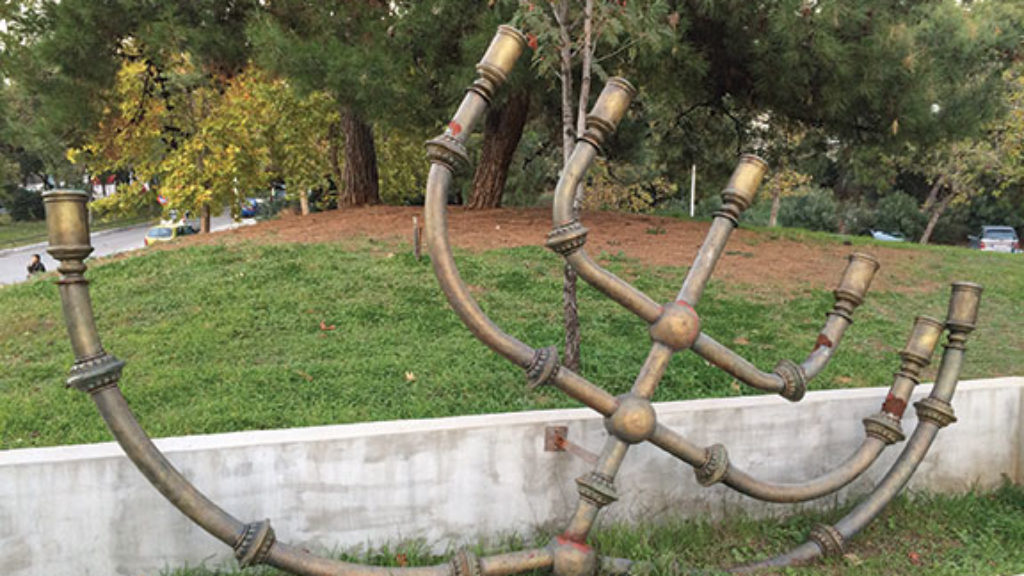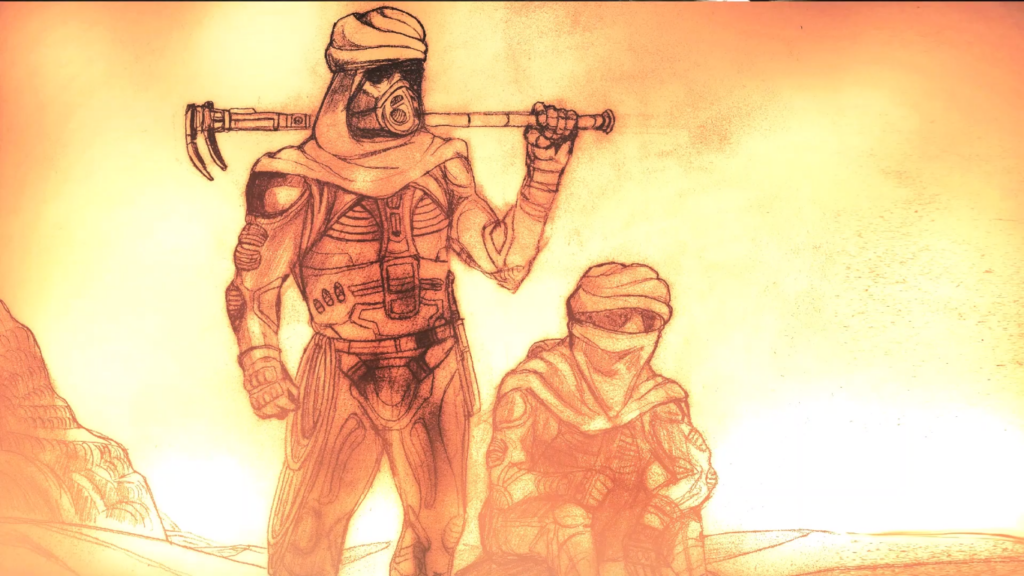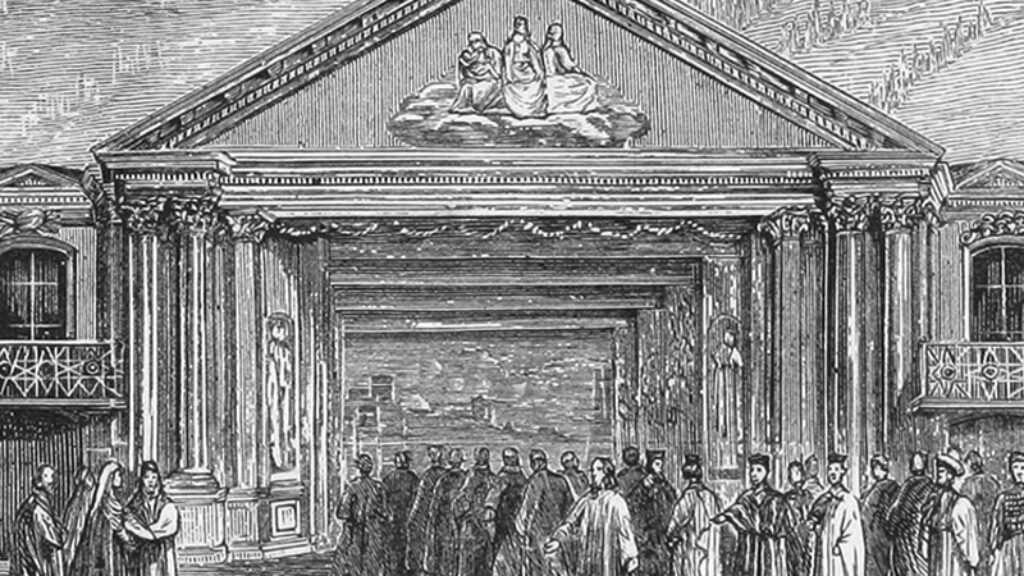Standing at Sinai in Medieval Germany

This illumination of the revelation at Sinai is taken from the Tripartite Mahzor (Germany, ca.1300). Beneath a line of heavenly trumpets emerging from a thick layer of clouds, a clean-shaven Moses receives the law, with a heavily bearded Aaron close behind him. Rather surprisingly, Aaron is wearing a Christian episcopal mitre rather than traditional priestly regalia. Behind him a group of men, each wearing a Judenhut—the pointed hat that often distinguishes an Ashkenazi Jewish man in medieval manuscripts—look on. Behind a partition (a kind of synagogue mechitzah) of flowering vines, a group of women with normal human bodies, but with the faces of animals, look to the heavens. Such depictions in Ashkenazi manuscripts are common, though here it must be noted that (unlike, say, in the famous Griffins’ Head Haggadah) men are given ordinary human features.
As the men look across toward Aaron and Moses, the women gaze upward at the letter aleph, which begins the first word of the poem on the page, the Shavuot piyyut “Adon Imnani.” The endpoint of their gaze is the trumpets, which broadcast the divine voice. The foremost figure among the group of animal-headed women holds what I believe to be a siddur (prayerbook). If so, then she is the firzageren (or zogerke), the woman in medieval Ashkenazi Jewish communities who was responsible for reciting, translating, and interpreting the prayers for the female section of the synagogue. This illumination undoubtedly makes Torah the province of men, but I understand this small and easily overlooked detail of the siddur to indicate that the experience of the Divine Presence is accessible to women through prayer.
Comments
You must log in to comment Log In
Suggested Reading

Memory and Desecration in Salonica
Memory and a vandalized memorial in a once-Jewish city on the Aegean Sea.

Jews of Dune
In Chapterhouse: Dune, the sixth book in the Dune series and the last Herbert wrote before his death, the Jews show up.
Letters, Spring 2020
A Kind of Conversation?, Law and Love, Kosher for Passover!, and Deep Rivers

Brotherhood
How did the world's most antisemitic play become a symbol of positive Christian-Jewish relations? Karma Ben Johanan's new book explores an evolving dynamic.
Beth Haber
Wonderful rich reading- of placement of the womens' gaze-and in denoting the vine/mechitza, that is a kind of visual echo to the tree/vine separating Moses and Aaron from the men. The overall additions of these white tendrils give the flowing dynamism of this page a fresh read. Thank you for illuminating.
JJ Gross
Marc Epstein misreads a critical iconographic element in his brief essay on the image of the revelation at Sinai in the 13th Century Tripartite Mahzor, and errs when he says “The endpoint of (the women’s gaze) is the trumpets, which broadcast the divine voice.”
Thee are not just trumpets, and they are not the divine voice. What we have here are trumpets AND a single shofar.
These are clearly a reference to Psalm 98:6
"Behatzrotzot u’vkol shofar ha’riyu lifnei ha-melech Adonai"
"With trumpets and with the voice of a shofar, shout joyously before the Lord the King."
Hence the sound of this agglomeration of horns is being made by mortals, or perhaps angels, in tribute to God, and most certainly not by the Divine, as Mr. Epstein claims.
JJ Gross
Jerusalem
Mark Galler
Very informative. Continue to send me information.
Thank you.
Mark Galler